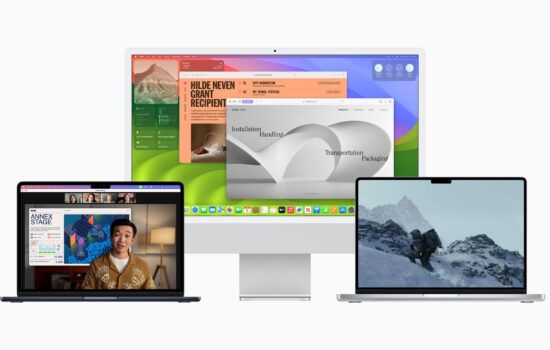Apple has successfully carved a niche for Mac as a reliable bastion against malware and cyber-attacks. Despite the brand’s best efforts to maintain this safety, threats in the digital realm persist and are always evolving. In the world of cybersecurity, the common question is, “Can Macs get viruses?” The answer, although disquieting, is yes. While not as frequently targeted, Apple devices are not resistant to cyber threats. This reality makes it even more critical for new Mac owners to familiarize themselves with methods to strengthen their devices against potential security breaches. This comprehensive guide will lead you through the key steps to ensure you optimize the security of your freshly acquired Mac.
1. The Importance of Regular Updates
Perhaps you might think that updates are primarily about introducing new features or fixing minor bugs. However, every new update also covers security enhancements designed specifically to arm your Mac against the most recent threats identified by Apple’s diligent security team. To enable automatic updates, navigate to ‘System Preferences,’ then ‘Software Update,’ and ensure ‘Automatically keep my Mac up to date’ is selected. Regular updates are your first line of defense, ensuring that your device is always at its strongest against external threats.
2. Firewall: Your Mac’s Robust Shield
Your Mac’s built-in firewall is like a fortress wall, monitoring and controlling the data that can enter and exit your device while you surf the internet. To verify your firewall is activated, navigate to ‘System Preferences’ > ‘Security & Privacy’ > ‘Firewall.’ The firewall acts as a barrier, restricting unwanted inbound and permitting outbound connections, thereby reducing the risk of cyber-attacks.
3. FileVault: The Gatekeeper of Your Data
FileVault is a highly effective tool that encrypts the data on your Mac, rendering your information inaccessible to unauthorized users. You can activate FileVault by visiting ‘System Preferences’ > ‘Security & Privacy’ > ‘FileVault.’ Remember to securely store the recovery key that FileVault provides ”“ it’s your fail-safe if you ever forget your login credentials.
4. Passwords: Your Personal Guard
A strong password is your personal guard, guarding against unauthorized access. For this, Apple provides a built-in password manager, Keychain Access, which aids in generating and securely storing complex passwords. To fortify your defense, consider enabling two-factor authentication, which adds another layer of security.
5. Phishing Attempts: The Cyber Impostors
Phishing attempts often disguise themselves as harmless emails, messages, or website pop-ups that aim to dupe you into providing personal information. Although Apple’s Mail app comes equipped with tools to identify these attempts, your personal vigilance is also important. Always double-check the source of an email or message and avoid clicking on unfamiliar links.
6. What You Should Not Forget: Regular Backups
Time Machine, Apple’s built-in backup feature, is your Mac’s lifebuoy. It routinely saves copies of all your files, apps, and system files. In the event of a security breach, this backup can be your salvation, restoring your system to its previous safe state.
7. Safe Browsing Practices: Your Compass in Cyberspace
Ensure you visit only secure websites ”“ those denoted by ‘https’ in the URL. Safari also includes the ‘Fraudulent Website Warning’ feature under ‘Preferences’ > ‘Security,’ which, when enabled, keeps you alerted about potentially unsafe websites.
8. Privacy Settings: The Keeper of Your Data
Make a habit of regularly auditing your privacy settings. Go to ‘System Preferences’ > ‘Security & Privacy’ > ‘Privacy’ and examine which apps have access to what data. Revoking unnecessary permissions can drastically reduce your vulnerability.
9. The Value of Trustworthy Software
Refrain from downloading apps from untrusted sources. The App Store offers a wealth of apps that have undergone safety checks by Apple. If downloading from outside the App Store is necessary, ensure the source is reputable, and the software has received positive reviews.
10. Antivirus Software: The Ace Up Your Sleeve
Though Macs come equipped with excellent built-in security features, the extra layer of protection from a trusted antivirus software can be a worthy investment, particularly for those handling sensitive data.
Conclusion: Mac Security is a Continuous Journey
While these steps provide a robust foundation for securing your new Mac, cybersecurity is an ongoing commitment. The digital landscape is dynamic, and as it evolves, new threats emerge. The key to keeping your Mac safe is staying vigilant and adopting these recommended steps. Doing so will turn your Mac into a digital fortress, well-equipped to withstand any potential security breaches.






